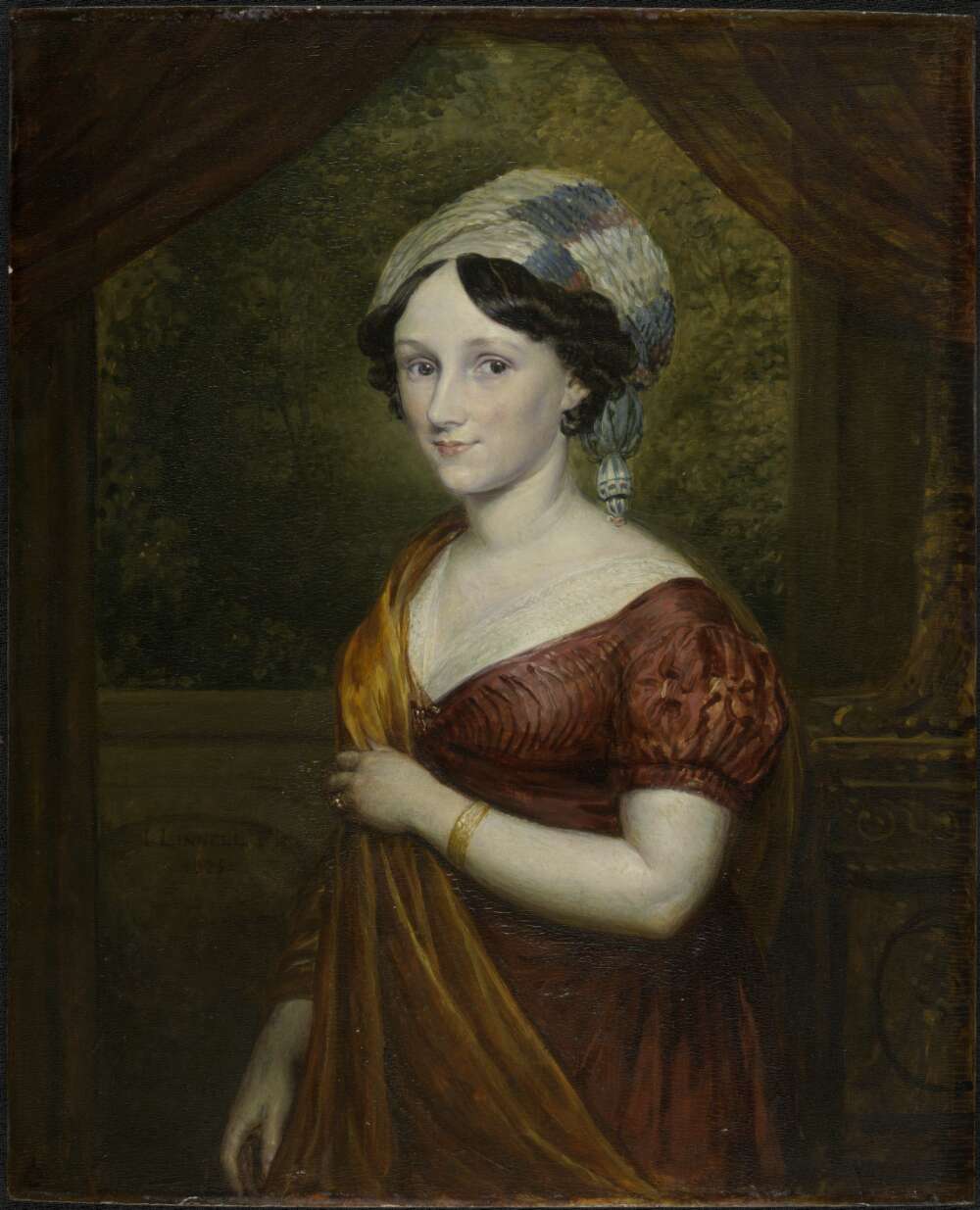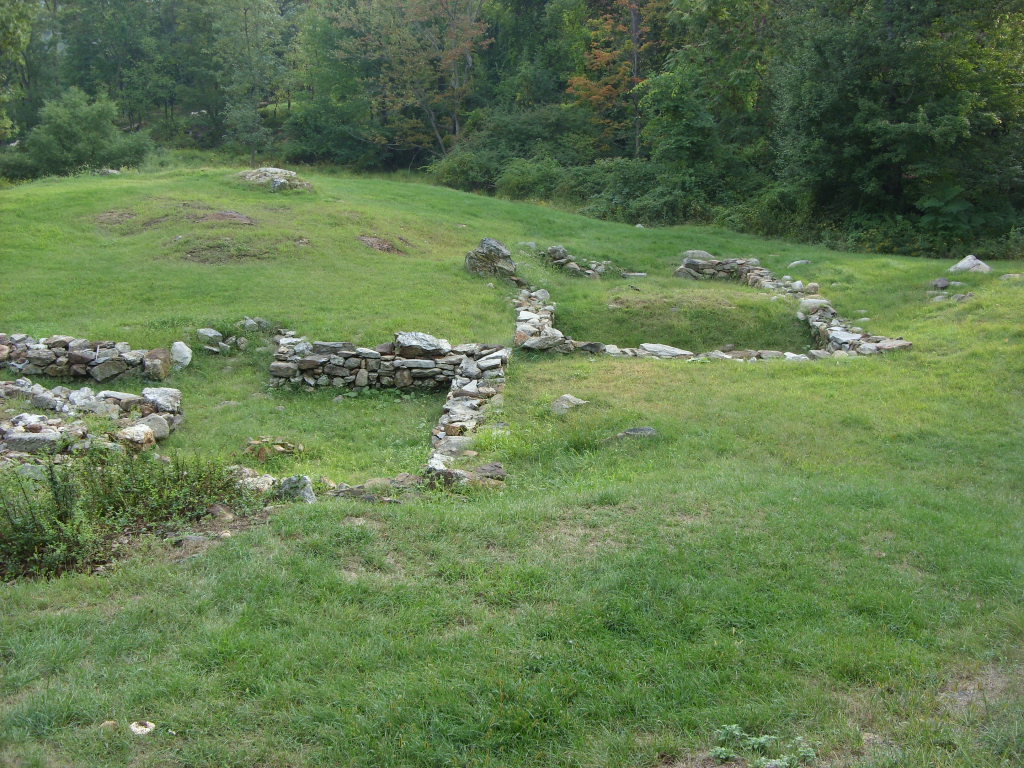|
Richard Turton
Captain Richard Turton was an officer of the 40th Regiment stationed at Sydney. He was selected to lead the first party of convicts in the re-establishment of the second convict settlement at Norfolk Island. The island had been abandoned since the first convict settlement was finally removed in 1814. The new settlement was intended to be the most severe settlement, where the worst convicts would be sent, without hope of escape and offering, in Governor Darling's view, "the extremest punishment short of death". With 34 soldiers, 57 convicts, and 12 soldiers' wives and children, he landed on 6 June 1825. Most of the convicts were tradesmen to clear the regrowth and prepare buildings. A treadmill A treadmill is a device generally used for walking, running, or climbing while staying in the same place. Treadmills were introduced before the development of powered machines to harness the power of animals or humans to do work, often a type of ... was planned, but never sent. The convi ... [...More Info...] [...Related Items...] OR: [Wikipedia] [Google] [Baidu] |
40th (2nd Somersetshire) Regiment Of Foot
The 40th (the 2nd Somersetshire) Regiment of Foot was an infantry regiment of the British Army, raised in 1717 in Annapolis Royal, Nova Scotia. Under the Childers Reforms it amalgamated with the 82nd Regiment of Foot (Prince of Wales's Volunteers) to form the Prince of Wales's Volunteers (South Lancashire Regiment) in 1881. History Formation The regiment was raised at Annapolis Royal in Nova Scotia by General Richard Philipps as the Richard Philipps's Regiment of Foot in August 1717 out of independent companies stationed in North America and the West Indies. Father Rale's War Prior to Father Rale's War, the Mi'kmaq responded to the establishment of a British fort at Canso, Nova Scotia by raiding the settlement's fishing station in 1720. Phillips sent a company of the 40th, under the command of Major Lawrence Armstrong, to take up garrison of a small fort in Canso built by a group of New England fishermen. The Mi'kmaq continued preying on nearby shipping, forcing the garri ... [...More Info...] [...Related Items...] OR: [Wikipedia] [Google] [Baidu] |
Convicts
A convict is "a person found guilty of a crime and sentenced by a court" or "a person serving a sentence in prison". Convicts are often also known as "prisoners" or "inmates" or by the slang term "con", while a common label for former convicts, especially those recently released from prison, is "ex-con" ("ex-convict"). Persons convicted and sentenced to non-custodial sentences tend not to be described as "convicts". The label of "ex-convict" usually has lifelong implications, such as social stigma or reduced opportunities for employment. The federal government of Australia, for instance, will not, in general, employ an ex-convict, while some state and territory governments may limit the time for or before which a former convict may be employed. Historical usage The particular use of the term "convict" in the English-speaking world was to describe the huge numbers of criminals, both male and female, who clogged British gaols in the 18th and early 19th century. Their crimes ... [...More Info...] [...Related Items...] OR: [Wikipedia] [Google] [Baidu] |
Convict Settlement
A penal colony or exile colony is a Human settlement, settlement used to exile prisoners and separate them from the general population by placing them in a remote location, often an island or distant colony, colonial territory. Although the term can be used to refer to a correctional facility located in a remote location, it is more commonly used to refer to communities of prisoners overseen by wardens or governors having absolute authority. Historically penal colonies have often been used for penal labour in an economically underdeveloped part of a state's (usually colonial) territories, and on a far larger scale than a prison farm. British Empire With the passage of the Transportation Act 1717, the British government initiated the penal transportation of Indentured servitude, indentured servants to British America, Britain's colonies in the Americas. British merchants would be in charge of transporting the convicts across the Atlantic, where in the colonies their indenture ... [...More Info...] [...Related Items...] OR: [Wikipedia] [Google] [Baidu] |
Norfolk Island
Norfolk Island (, ; Norfuk: ''Norf'k Ailen'') is an external territory of Australia located in the Pacific Ocean between New Zealand and New Caledonia, directly east of Australia's Evans Head and about from Lord Howe Island. Together with the neighbouring Phillip Island and Nepean Island, the three islands collectively form the Territory of Norfolk Island. At the 2021 census, it had inhabitants living on a total area of about . Its capital is Kingston. The first known settlers in Norfolk Island were East Polynesians but they had already departed when Great Britain settled it as part of its 1788 settlement of Australia. The island served as a convict penal settlement from 6 March 1788 until 5 May 1855, except for an 11-year hiatus between 15 February 1814 and 6 June 1825, when it lay abandoned. On 8 June 1856, permanent civilian residence on the island began when descendants of the ''Bounty'' mutineers were relocated from Pitcairn Island. In 1914 the UK handed Norfo ... [...More Info...] [...Related Items...] OR: [Wikipedia] [Google] [Baidu] |
Ralph Darling
General Sir Ralph Darling, GCH (1772 – 2 April 1858) was a British Army officer who served as Governor of New South Wales from 1825 to 1831. He is popularly described as a tyrant, accused of torturing prisoners and banning theatrical entertainment. Local geographical features named after him include the Darling River and Darling Harbour in Sydney. Early career Darling seems to have been unique in the British Army of this period, as he progressed from an enlisted man to become a general officer with a knighthood. Born in Ireland, he was the son of a sergeant in the 45th Regiment of Foot who subsequently gained the unusual reward of promotion to officer rank as a lieutenant. Like most of the small number of former non-commissioned officers in this position, Lieutenant Darling performed only regimental administrative duties. He struggled to support his large family on a subaltern's pay. Ralph Darling enlisted at the age of fourteen as a private in his father's regiment, and ser ... [...More Info...] [...Related Items...] OR: [Wikipedia] [Google] [Baidu] |
Treadmill
A treadmill is a device generally used for walking, running, or climbing while staying in the same place. Treadmills were introduced before the development of powered machines to harness the power of animals or humans to do work, often a type of mill operated by a person or animal treading the steps of a treadwheel to grind grain. In later times, treadmills were used as punishment devices for people sentenced to hard labor in prisons. The terms ''treadmill'' and ''treadwheel'' were used interchangeably for the power and punishment mechanisms. More recently, treadmills have instead been used as exercise machines for running or walking in one place. Rather than the user powering a mill, the device provides a moving platform with a wide conveyor belt driven by an electric motor or a flywheel. The belt moves to the rear, requiring the user to walk or run at a speed matching the belt. The rate at which the belt moves is the rate of walking or running. Thus, the speed of running may b ... [...More Info...] [...Related Items...] OR: [Wikipedia] [Google] [Baidu] |
Vance Young Donaldson (Commandant)
Captain Vance Young Donaldson, (born 1791, date of death unknown) soldier and penal administrator, was born in Tyrone and entered the army at the age of thirteen, serving in the 57th Regiment under Wellington. He led his regiment to Norfolk Island in March 1826 as the second commandant of the second convict settlement. His first act was to arrange for the thirty women on the island to be returned to Sydney as Governor Darling disapproved of their presence at this "place of the extremest punishment short of death". In September 1826 an attempt was made by the convicts to escape from the island by boat, having been told that there was an island within a hundred miles where they could safely hide and never be found. While most of the soldiers were chasing two absconders, about thirty prisoners seized and bound their overseers, robbed the Stores for provisions and weapons, and put three boats to sea, killing a soldier. Donaldson and soldiers followed them to the nearby small and un ... [...More Info...] [...Related Items...] OR: [Wikipedia] [Google] [Baidu] |
57th (West Middlesex) Regiment Of Foot
The 57th (West Middlesex) Regiment of Foot was a regiment of line infantry in the British Army, raised in 1755. Under the Childers Reforms it amalgamated with the 77th (East Middlesex) Regiment of Foot to form the Middlesex Regiment in 1881. History Early wars The regiment was raised in Somerset and Gloucester by Colonel John Arabin as the 59th Regiment of Foot in 1755 for service in the Seven Years' War. It was re-ranked as the 57th Regiment of Foot, following the disbandment of the existing 50th and 51st regiments, in 1756. The regiment, which originally operated as marines, was deployed to Gibraltar in 1757, to Menorca in 1763 and to Ireland in 1767.Warre, p. 30 It was dispatched to Charleston, South Carolina in February 1776 for service in the American Revolutionary War. The regiment saw action at the Battle of Long Island in August 1776 and stormed Fort Montgomery at the Battle of Forts Clinton and Montgomery in October 1777.Warre, p. 31 The regiment's light company ... [...More Info...] [...Related Items...] OR: [Wikipedia] [Google] [Baidu] |
Margaret Hazzard
Margaret Hazzard (Ivy Margaret Hazzard) 1910 – 19 January 1987 was an Australian author born in Hertfordshire, England. Hazzard immigrated to Melbourne, Australia in 1960 and established a career as a freelance writer, publishing in The Sydney Morning Herald and the Australian Women's Weekly. She also worked as a teacher, taking short courses in writing fiction and biography at the Centre of Adult Education (CAE) in Melbourne. In 1970 Hazzard founded the Victorian Branch of the Society of Women Writers and was elected chair from 1970 to 1974. The Society established the biennial Margaret Hazzard Award in 1980 in recognition of her contribution. Hazzard moved to Norfolk Island in 1974 where she began her "most prolific writing period". Hazzard died in 1987 and is buried at Mount Macedon, Victoria Mount Macedon is a town north-west of Melbourne in the Australian state of Victoria. The town is located below the mountain of the same name, which rises to AHD. At the 2 ... [...More Info...] [...Related Items...] OR: [Wikipedia] [Google] [Baidu] |




